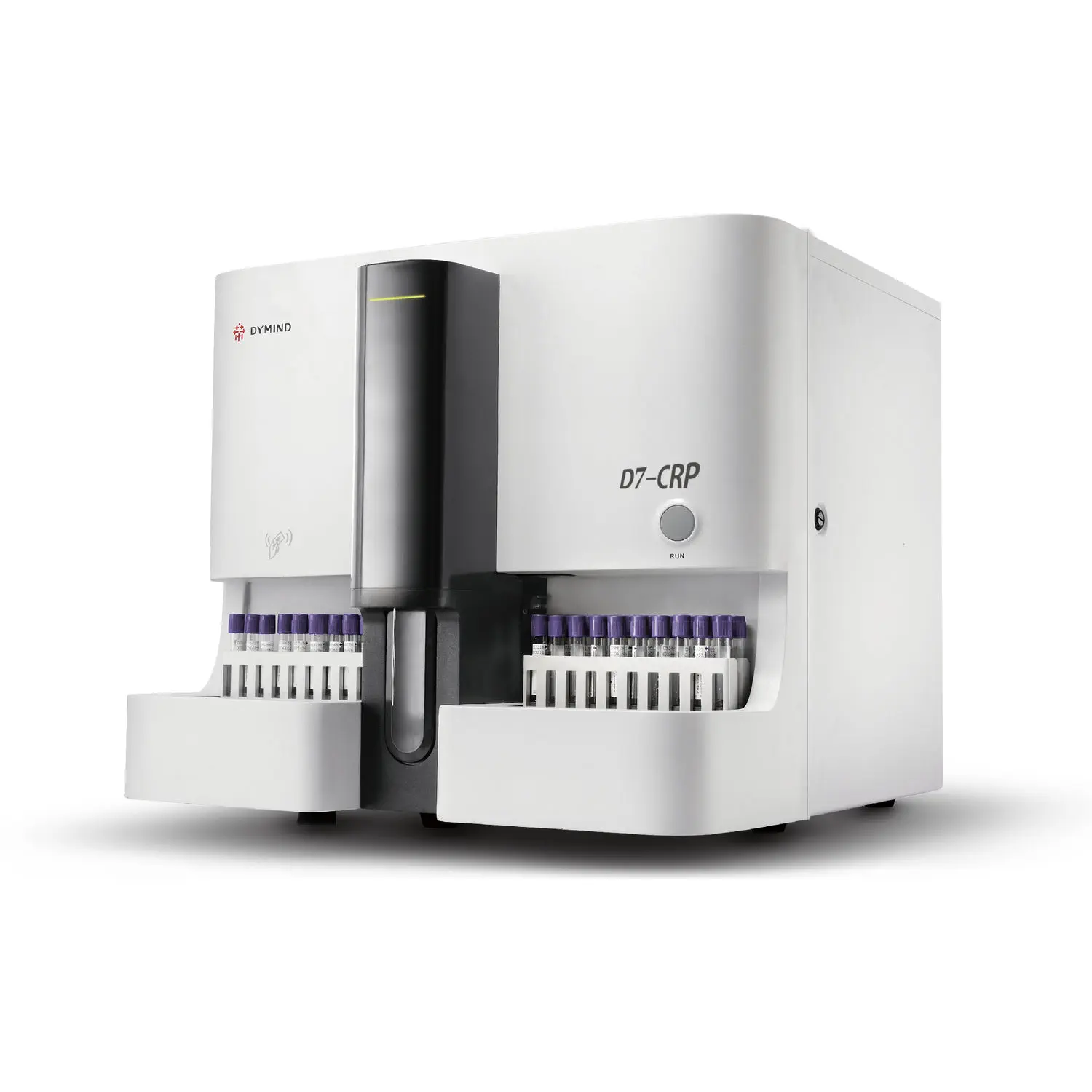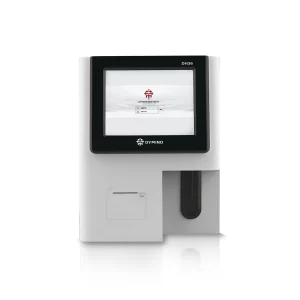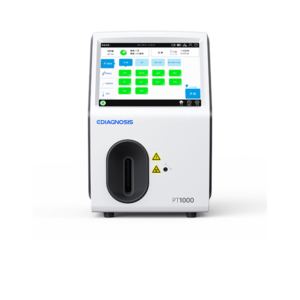The automatic hematology analyzer machine is a device used clinically to analyze blood cells, differentiate the 5 components of white blood cells, measure hemoglobin concentration and measure C-reactive protein concentration. (CRP).
Analysis modes: CBC (complete blood count), CRP, CBC+DIFF (white blood cell differentiation), CBC+CRP and CBC+DIFF+CRP.

Operating principle: The automatic hematology testing machine uses the electrical impedance method to analyze WBC/BAS, RBC and PLT data; Colorimetric method is used to measure hemoglobin concentration; laser-based flow cytometry to count and differentiate blood cells; Immunoturbidimetric method to analyze CRP protein concentration.
Principle of semiconductor laser scattering flow cytometry: A certain volume of blood is aspirated and diluted by a specified amount of reagent and injected into the flow chamber. Surrounded by the dilute solution, the blood cells are passed through the center of the flow chamber in a column at high speed, and passed through a laser beam that causes the light to scatter at many different angles. The intensity of the scattered light represents the size of the blood cells and the intracellular density. In particular, narrow-angle scattered light signals represent cell size, while medium-angle and wide-angle scattered light signals represent intracellular information (information about the nucleus and cytoplasm). . Optical probes receive these scattered information and convert them into electrical pulse signals. The electrical pulse data was then used to plot a 2D scatter plot.
- Principle of electrical impedance method: The analysis sample is put into the white blood cell analysis unit (or red blood cell/platelet analysis unit) after being diluted. The method works by measuring the change in resistance created by a blood cell as it passes through an aperture of known size. The electrode is placed at both ends of the solution on both sides of the aperture to form an electrically conductive path. As each cell passes through the aperture it creates a change in the resistance between the two electrodes. This change produces an electrical pulse that can be measured. The number of electrical pulses generated is equal to the number of cells passing through the aperture, and the amplitude of each electrical pulse is proportional to the volume of the corresponding cell. Each electrical pulse is amplified and compared to the internal reference voltage channel, and only electrical pulses with sufficiently high amplitude are accepted. If the electrical pulse generated has an amplitude higher than the lower threshold value of WBC/BAS/RBC/PLT, it is considered WBC/BAS/RBC/PLT.
- Principle of colorimetric method: WBC/HGB diluent is introduced into the HGB tank and mixed with a certain amount of lysate, converting hemoglobin into a complex that can be measured at 525 nm. An LED is mounted on one side of the tank and emits a monochromatic beam of light at a wavelength of 525 nm. Light passes through the sample and is measured by an optical probe on the opposite side. The signal is then amplified and the voltage is measured and compared to a blank sample (sample measured when there is only dilute solution in the tank).
- Principle of immunoturbidimetric method: The analyzer releases parallel monochromatic light at a certain wavelength into the CRP tank. Light will be scattered when it encounters the antigen (CRP)-antibody complex. The analyzer receives scattered light and converts them into electronic signals after amplifying the light signal. Compare them with the voltage generated by background light to calculate the CRP protein concentration. The intensity of the scattered light is proportional to the amount of the complex.
Specifications:
| Size | 650mm (W) x 610mm (D) x 550mm (H)
60,5kg |
| Operating conditions | Temperature: 15°C-30°C
Humidity: 30-90% Pressure: 70-106 kPa |
| Power supply | Voltage: AC 100V-240V (±10%)
Frequency: 50Hz/60Hz(±1 Hz) Power: ≤250VA |
| Wattage | Up to 90 samples/hour |
| Sample type | Whole blood, capillary blood, diluted blood |
| Parameter | 27 reporting parameters + 6 research parameters + 3 charts |









